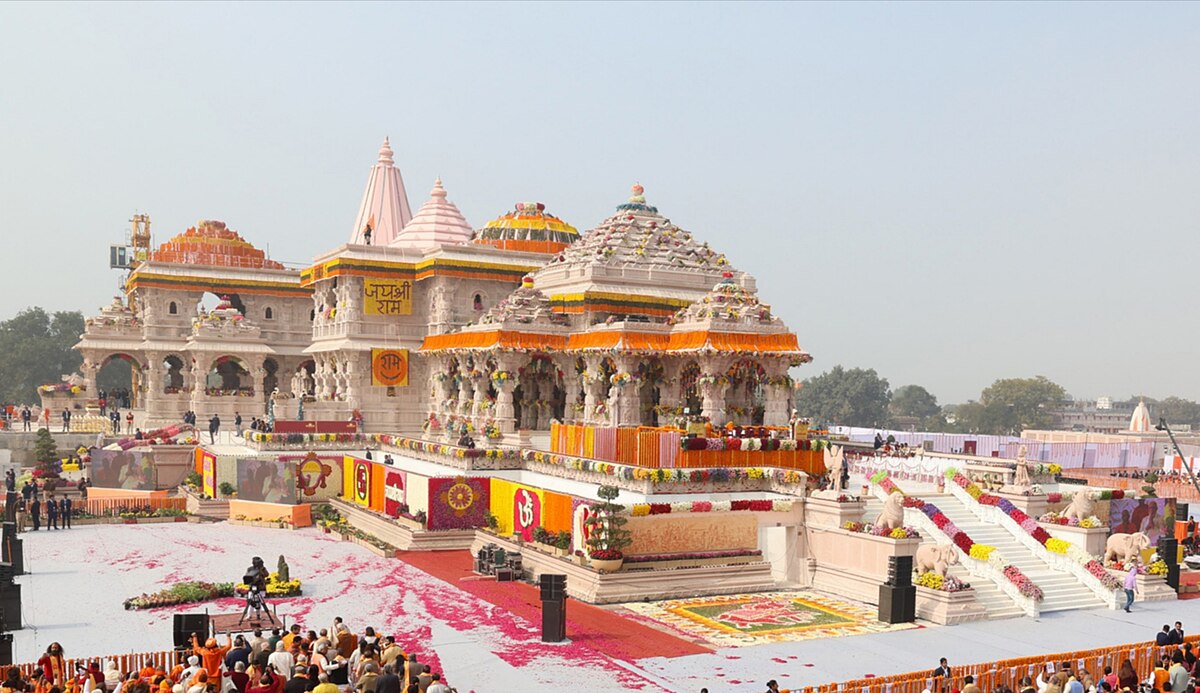Ayodhya is not just a city—it is a vibration. A pulse that has echoed through millennia, resonating with the chant of “Shri Ram Jai Ram Jai Jai Ram.” At its heart lies a story of unshakable devotion, cultural continuity, and a spiritual homecoming—the story of the Ram Mandir. This is not just about bricks and mortar. This is about legacy, identity, and a people’s spiritual yearning spanning generations.
The Birthplace of Shri Ram
According to ancient Hindu texts, Ayodhya is one of the seven most sacred cities (Sapta Puri) in Hinduism. It is believed to be the birthplace of Shri Ram, the seventh incarnation of Lord Vishnu. The epic Ramayana, composed by sage Valmiki, unfolds here—where King Dasharatha ruled, and where the divine story of dharma, sacrifice, and virtue began.
For Hindus, Ayodhya is not just geography. It’s the physical embodiment of sacred memory. And the Janmabhoomi—Shri Ram’s birthplace—is the axis around which the spiritual and emotional compass of millions revolves.
An Unbroken Thread of Devotion
For centuries, Hindus have considered the site of the Ram Janmabhoomi as sacred. Even during historical upheavals and shifting rulers, this reverence never faded. Devotees continued visiting the site, offering prayers, lighting lamps, and reciting the Ramayana under the open sky.
The memory of a temple at the Janmabhoomi was carried in the oral tradition, preserved through folk songs, ancient texts, copper plate inscriptions, and local history. This was not mythology—it was memory, alive in the hearts of countless generations.
A Temple That Lived in the Soul
Even when there was no visible structure, the Ram Mandir remained alive—in paintings, in songs, in Ram Leelas enacted in every corner of India. It became a part of the national psyche. Every time a devotee folded their hands in front of a Ram idol anywhere in the country, Ayodhya was present in spirit.
For many, the Ram Mandir represented more than a structure. It symbolized the resilience of faith. It was a temple that lived in the soul, waiting for its time to manifest once again.
A Spiritual Movement, Not Just a Legal Battle
The journey to rebuild the Ram Mandir was long and filled with emotional, social, and legal complexities. But for most Hindus, it was never just a political issue—it was a matter of faith. Over decades, saints, seers, scholars, and citizens contributed their voice, time, and prayers to the movement.
This was not about division. It was about restoration.
After years of awaiting closure, the historic Supreme Court verdict in 2019 cleared the way for the construction of the Ram Mandir at the Janmabhoomi site. The judgment was accepted peacefully across communities—a rare moment of collective maturity in modern Indian history.
The Shilanyas and the Beginning of Reconstruction
On August 5, 2020, the foundation stone (Shilanyas) was laid by Prime Minister Narendra Modi in a spiritually charged ceremony. The event was attended by saints from various Hindu sects, showcasing unity and celebration rather than triumphalism.
The temple’s design drew from ancient Hindu temple architecture, guided by traditional shilpa shastras. Artisans from all over India were brought in to carve intricate stonework using age-old techniques. The structure is being built to last over a thousand years, both physically and symbolically.
The New Ram Mandir – A Modern Pilgrimage
The newly constructed Ram Mandir was inaugurated on January 22, 2024. At once ancient and modern, the temple is an architectural marvel—a blend of devotion and detail. It stands 161 feet tall, with three stories, 392 intricately carved pillars, and 44 intricately designed gates. The sanctum sanctorum houses a black stone murti (idol) of Bhagwan Ram Lalla as a five-year-old boy, glowing with divine innocence and spiritual power.
Every inch of the temple reflects years of dedication, planning, and sacred purpose. The temple complex includes a large mandap, prayer halls, museum, and facilities to serve lakhs of devotees every year.
More than 4,000 artisans and volunteers, including sculptors, engineers, priests, and workers, contributed their craft, sweat, and prayer into its creation. The energy at the site is overwhelming—there’s chanting in the air, devotion in the dust, and peace in every stone.
What It Means to Millions
To the devout Hindu, the Ram Mandir is more than a temple—it’s a return. A return to roots, to selfhood, to dharma. It marks the triumph of collective patience, unwavering devotion, and spiritual continuity. For many, visiting the temple is not just a yatra—it is darshan in the truest sense.
Even those who may not be religious have found themselves moved by the sheer magnitude of unity the temple has created. In a world so often fragmented, the Ram Mandir stands as a spiritual anchor—bringing people together through the shared stories of the Ramayana.
The Spirit of Ayodhya Today
The city of Ayodhya has been reborn. Roads have been widened, ghats cleaned, and spiritual tourism has brought a new wave of cultural awareness. However, despite its transformation, Ayodhya’s soul remains unchanged.
At dusk, the Saryu River still gleams with floating diyas. Devotees still sing bhajans by the riverbank. And now, rising from the land like a mantra turned to stone, stands the Ram Mandir—watching over all, reminding everyone that truth may bend, but it never breaks.
A Living Legacy
In the words of Goswami Tulsidas, who composed the Ramcharitmanas:
“Jo sumirat siddhi hoi, Gani Naayak kari bar badan.”
—Just by remembering Ram, even the impossible becomes possible.
The Ram Mandir is not the end of a journey. It is the beginning of a new chapter in a story that will be told for another thousand years. It is India bowing its head to its own soul. It is Sanatan Dharma breathing through stone.
Welcome to the eternal home of Shri Ram.
